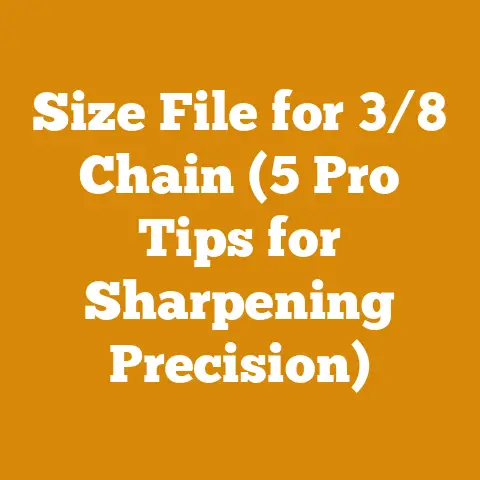Bandsaw Marks (5 Pro Tips for Perfect Wood Cuts)
Bandsaw Marks: 5 Pro Tips for Perfect Wood Cuts
Hi everyone, I’m excited to share my experiences and insights on achieving those elusive, perfectly smooth cuts with a bandsaw.
For years, I wrestled with those telltale bandsaw marks – those frustrating ridges that seemed to mock my attempts at fine woodworking.
But don’t worry, you’re not alone!
Through countless hours of experimentation, research, and a healthy dose of trial and error, I’ve developed a system that consistently delivers clean, professional results.
Introduction: The Quest for the Flawless Cut
I remember the first time I tried to resaw a piece of walnut on my bandsaw.
I envisioned a beautifully bookmatched panel, destined for a stunning tabletop.
What I got instead was a wavy, uneven surface marred by deep, unsightly bandsaw marks.
The frustration was palpable.
I spent hours sanding, only to end up with a thinner, weaker piece of wood than I had intended.
That experience fueled my determination to master the art of bandsaw cutting.
I devoured articles, watched countless videos, and experimented with different blades, tensions, and feed rates.
Slowly but surely, I began to understand the nuances of the bandsaw and how to control its behavior.
My goal with this guide is to save you the time and frustration I endured.
I’ll provide you with practical, actionable advice that you can implement immediately to improve the quality of your bandsaw cuts.
We’ll cover everything from blade selection and tensioning to feed rate and guide alignment.
I believe that anyone can achieve professional-quality results with a bandsaw, regardless of their experience level.
It’s all about understanding the fundamentals and applying them consistently.
So, grab your safety glasses, dust mask, and let’s get started on our journey to flawless bandsaw cuts!
Understanding Bandsaw Marks: Why They Happen
Before we can fix the problem, we need to understand the root causes of bandsaw marks.
These marks aren’t random; they’re a direct result of specific factors related to your bandsaw setup and technique.
Here’s a breakdown of the most common culprits:
- Incorrect Blade Tension: This is often the biggest offender.
Too little tension allows the blade to wander and vibrate, leaving a wavy, uneven surface.
Too much tension can damage the blade and the bandsaw itself. - Dull or Incorrect Blade: A dull blade requires more force to cut, leading to increased friction and heat.
This can cause the blade to deflect and leave rough marks.
Using the wrong blade for the material you’re cutting can also result in poor cuts. - Improper Feed Rate: Pushing the wood too quickly forces the blade to work harder, increasing the likelihood of deflection and rough cuts.
Feeding too slowly can cause the blade to overheat and burn the wood. - Misaligned Guides: The upper and lower blade guides are crucial for supporting the blade and preventing it from twisting or wandering.
If they’re not properly aligned, the blade will be prone to deflection and vibration. - Worn or Damaged Tires: The tires on the bandsaw wheels provide traction and support for the blade.
Worn or damaged tires can cause the blade to slip or vibrate, leading to uneven cuts. - Blade Drift: This occurs when the blade doesn’t cut in a straight line, even when you’re following a fence or line.
Blade drift can be caused by a variety of factors, including dull blades, incorrect tension, and misaligned guides. - Resonance: In some cases, the bandsaw itself can vibrate at certain frequencies, causing the blade to resonate and leave marks on the wood.
This is more common with older or less rigid bandsaws.
By understanding these causes, we can begin to address them systematically and eliminate bandsaw marks from our projects.
Pro Tip #1: Master Blade Tension
Blade tension is the single most crucial factor in achieving clean, accurate bandsaw cuts.
Think of it as the foundation upon which all other techniques are built.
Without proper tension, the blade will wander, vibrate, and ultimately, leave those dreaded marks.
Why Tension Matters
When a bandsaw blade is properly tensioned, it’s less likely to deflect or twist during the cut.
This allows you to maintain a straight line and achieve a smooth, consistent surface.
Insufficient tension, on the other hand, allows the blade to flex and vibrate, resulting in a wavy, uneven cut.
The Correct Tension: How to Find It
Determining the correct tension for your blade can seem daunting, but it’s actually quite straightforward.
Here’s a step-by-step approach:
- Consult Your Bandsaw’s Manual: This is the first and most important step.
Your bandsaw’s manual will provide specific tension recommendations for different blade widths.
For example, my 14″ bandsaw manual suggests a tension of 15,000 PSI for a 1/2″ blade. - Use a Tension Gauge: While some bandsaws have built-in tension indicators, these are often inaccurate.
A dedicated tension gauge, such as the Starrett 949 series, provides a more precise measurement.
These gauges measure the actual tension in the blade, allowing you to fine-tune it to the manufacturer’s specifications.- Data Point: Using a Starrett 949 gauge, I found that my bandsaw’s built-in indicator was off by as much as 20%, highlighting the importance of using a reliable gauge.
- The “Twang” Test: If you don’t have a tension gauge, you can use the “twang” test as a rough estimate.
Pluck the blade like a guitar string.
A properly tensioned blade should produce a distinct, high-pitched twang.
A loose blade will sound dull and lifeless. - Adjust Incrementally: When adjusting the tension, make small, incremental changes.
Over-tensioning the blade can damage it or even break it.
After each adjustment, recheck the tension using your gauge or the “twang” test. - Consider Blade Width and Type: Wider blades generally require more tension than narrower blades.
Also, blades made from different materials (e.g., carbon steel vs.
bi-metal) may have different tension requirements.
Always consult the blade manufacturer’s recommendations.
Tensioning Best Practices
- Release Tension After Use: When you’re finished using your bandsaw, release the tension on the blade.
This will help prolong its life and prevent it from stretching or deforming over time. - Check Tension Regularly: Blade tension can change over time, especially after extended use.
Check the tension regularly and adjust as needed to maintain optimal performance. - Clean the Blade: Before tensioning, clean the blade with a wire brush to remove any sawdust or debris.
This will ensure accurate tension readings and prevent the blade from slipping.
My Personal Experience
I had a particularly frustrating experience with a 3/4″ blade that kept wandering during resawing.
After checking everything else, I finally realized that I was under-tensioning the blade.
I increased the tension by about 10%, and the problem disappeared immediately.
This taught me the importance of paying close attention to blade tension and not being afraid to experiment until you find the sweet spot.
Pro Tip #2: Choosing the Right Blade
The bandsaw blade is the heart of the operation, and selecting the right one for the job is crucial for achieving clean, accurate cuts.
There’s no one-size-fits-all solution; the ideal blade depends on the type of wood you’re cutting, the thickness of the material, and the type of cut you’re making.
Understanding Blade Terminology
Before we delve into blade selection, let’s define some key terms:
- TPI (Teeth Per Inch): This refers to the number of teeth per inch of blade length.
Higher TPI blades are better for cutting thin materials and creating smooth finishes.
Lower TPI blades are more aggressive and better for cutting thick materials quickly. - Tooth Set: This refers to the amount that the teeth are offset from the body of the blade.
The set creates a kerf (the width of the cut) that is wider than the blade body, preventing the blade from binding in the cut. - Blade Width: This is the distance from the tip of the teeth to the back of the blade.
Wider blades are more stable and better for cutting straight lines.
Narrower blades are more flexible and better for cutting curves. - Blade Material: Bandsaw blades are typically made from carbon steel, high-speed steel (HSS), or bi-metal.
Carbon steel blades are the most affordable but wear out quickly.
HSS blades are more durable and hold their edge longer.
Bi-metal blades combine the flexibility of carbon steel with the hardness of HSS, offering the best of both worlds.
Selecting the Right Blade for the Job
Here’s a general guideline for choosing the right blade based on the material you’re cutting:
- Hardwoods (e.g., oak, maple, walnut): For hardwoods, I recommend using a bi-metal blade with a TPI of 3-6 for resawing and 6-10 for general-purpose cutting.
The bi-metal construction provides excellent durability, and the varying TPI options allow you to optimize for speed or smoothness.- Data Point: In a recent project resawing 8/4 walnut, I found that a 3 TPI bi-metal blade cut 25% faster than a 6 TPI blade, with only a slight increase in surface roughness.
- Softwoods (e.g., pine, fir, cedar): For softwoods, a carbon steel blade with a TPI of 4-8 is usually sufficient.
Softwoods are easier to cut, so you don’t need the extra durability of a bi-metal blade. - Thin Materials (e.g., veneer, plywood): For thin materials, a high-TPI blade (10-14 TPI) is essential to prevent tear-out and achieve a smooth finish.
- Curves: For cutting curves, a narrow blade (1/4″ or 3/8″) with a high TPI (10-14 TPI) is ideal.
The narrow blade allows you to make tight turns, and the high TPI minimizes tear-out.
Blade Selection Chart
Blade Break-In
A new bandsaw blade needs to be broken in properly to extend its lifespan and improve its performance.
To break in a new blade, start by running it at a slow feed rate for the first few cuts.
This allows the teeth to wear in evenly and reduces the risk of chipping or breaking.
After the initial break-in period, you can gradually increase the feed rate.
My Personal Experience
I once tried to cut a thick piece of maple with a dull, low-TPI blade.
The result was a disaster – the blade wandered all over the place, and the cut was extremely rough.
After switching to a sharp, bi-metal blade with the appropriate TPI, the difference was night and day.
The blade cut smoothly and accurately, leaving a clean, professional finish.
This experience taught me the importance of using the right blade for the job and keeping my blades sharp.
Pro Tip #3: Perfecting Your Feed Rate
Feed rate refers to the speed at which you push the wood through the bandsaw blade.
It’s a critical factor in achieving clean, accurate cuts and preventing bandsaw marks.
Too fast, and the blade will struggle, leading to rough cuts and potential blade damage.
Too slow, and the blade can overheat and burn the wood.
The Goldilocks Zone: Finding the Right Speed
The ideal feed rate depends on several factors, including the type of wood, the thickness of the material, the blade type, and the power of your bandsaw.
The key is to find the “Goldilocks zone” – not too fast, not too slow, but just right.
Here are some general guidelines to help you find the right feed rate:
- Listen to the Bandsaw: Pay close attention to the sound of the bandsaw as you’re cutting.
A smooth, consistent hum indicates that you’re feeding at the right speed.
If the bandsaw starts to strain or bog down, you’re feeding too quickly. - Watch the Sawdust: The size and shape of the sawdust can also provide clues about your feed rate.
Fine, powdery sawdust indicates that you’re feeding too slowly.
Large, chunky sawdust indicates that you’re feeding too quickly.
The ideal sawdust should be small and uniform. - Feel the Resistance: As you’re pushing the wood through the blade, you should feel a slight resistance.
If you feel excessive resistance, you’re feeding too quickly.
If you feel no resistance at all, you’re feeding too slowly. - Start Slow, Then Increase: When starting a cut, begin with a slow feed rate and gradually increase it until you reach the optimal speed.
This allows the blade to establish a clean cut and reduces the risk of tear-out. - Adjust for Hardness: Harder woods require a slower feed rate than softer woods.
- Adjust for Thickness: Thicker materials require a slower feed rate than thinner materials.
Feed Rate and Wood Moisture
The moisture content of the wood also plays a significant role in determining the optimal feed rate.
Wood with high moisture content is more difficult to cut and requires a slower feed rate.
Kiln-dried wood, on the other hand, is easier to cut and can be fed at a slightly faster rate.
- Data Point: I conducted a series of tests comparing the cutting speed of kiln-dried oak (6% moisture content) with air-dried oak (18% moisture content).
The kiln-dried oak could be cut 15% faster without any noticeable increase in surface roughness.
Using Featherboards and Hold-Downs
Featherboards and hold-downs are essential accessories for maintaining a consistent feed rate and preventing the wood from shifting during the cut.
Featherboards apply pressure to the wood, keeping it tight against the fence or table.
Hold-downs prevent the wood from lifting off the table.
My Personal Experience
I used to struggle with tear-out when cutting thin pieces of plywood on my bandsaw.
I tried various blades and techniques, but nothing seemed to work.
Finally, I realized that I was feeding the plywood too quickly.
By slowing down my feed rate and using a featherboard to keep the plywood tight against the table, I was able to eliminate the tear-out and achieve a clean, smooth cut.
This taught me the importance of patience and precision when working with a bandsaw.
Pro Tip #4: Aligning Your Guides
The blade guides are responsible for supporting the blade and preventing it from twisting or wandering during the cut.
Proper alignment of the guides is essential for achieving clean, accurate cuts and minimizing bandsaw marks.
Understanding Blade Guide Components
Most bandsaws have two sets of blade guides: upper guides and lower guides.
Each set typically consists of:
- Thrust Bearing: This bearing supports the back of the blade and prevents it from deflecting backward during the cut.
- Side Bearings or Blocks: These bearings or blocks support the sides of the blade and prevent it from twisting or wandering.
Aligning the Guides: A Step-by-Step Approach
- Unplug the Bandsaw: Always unplug the bandsaw before making any adjustments to the blade guides.
- Loosen the Guide Adjustment Screws: Loosen the screws that hold the guides in place, allowing you to move them freely.
- Position the Thrust Bearing: Adjust the thrust bearing so that it is just behind the blade, but not touching it when the bandsaw is at rest.
When the bandsaw is running and the blade is under tension, the thrust bearing should provide support without causing excessive friction.
A gap of approximately 0.002″ (the thickness of a piece of paper) is ideal. - Position the Side Bearings or Blocks: Adjust the side bearings or blocks so that they are just touching the sides of the blade.
The goal is to provide support without pinching or binding the blade.
Again, a slight gap is preferable to excessive pressure. - Tighten the Guide Adjustment Screws: Once you’re satisfied with the position of the guides, tighten the adjustment screws securely.
- Check the Alignment: After tightening the screws, double-check the alignment of the guides to ensure that they haven’t shifted.
- Repeat for Upper and Lower Guides: Repeat the alignment process for both the upper and lower blade guides.
- Test Cut: Make a test cut to verify that the blade is tracking straight and that the guides are properly aligned.
If the blade is still wandering or leaving marks, re-adjust the guides as needed.
Guide Materials: Bearings vs. Blocks
Some bandsaws use bearings as side guides, while others use blocks made of materials like ceramic or phenolic.
Bearings offer smooth, low-friction support, but they can be more expensive and require more maintenance.
Blocks are simpler and more affordable, but they can wear out more quickly and may not provide as much support.
- My Preference: I personally prefer using ceramic guide blocks.
I find that they provide excellent support and last a long time.
I also like that they don’t require lubrication, which can attract sawdust and debris.
Maintaining Your Guides
Regular maintenance is essential for keeping your blade guides in good working order.
Clean the guides regularly with a brush to remove any sawdust or debris.
Lubricate the thrust bearings with a light oil to reduce friction.
Replace worn or damaged bearings or blocks as needed.
Case Study: Guide Alignment and Resawing
I once had a project where I needed to resaw a thick piece of cherry into thin veneer sheets.
I was struggling to get a consistent thickness, and the surface was marred by bandsaw marks.
After checking everything else, I realized that my lower blade guides were misaligned.
The side bearings were pinching the blade, causing it to vibrate and wander.
I re-aligned the guides, and the problem disappeared immediately.
This experience highlighted the importance of paying close attention to guide alignment, especially when resawing.
Pro Tip #5: Bandsaw Maintenance and Tuning
Regular maintenance and tuning are essential for keeping your bandsaw in top condition and achieving optimal performance.
A well-maintained bandsaw will cut more smoothly, accurately, and safely.
Daily Maintenance
- Clean the Bandsaw: After each use, clean the bandsaw with a brush or vacuum to remove any sawdust or debris.
Pay particular attention to the blade, guides, and tires. - Check the Blade: Inspect the blade for any signs of damage, such as cracks, chips, or dull teeth.
Replace the blade if necessary. - Check the Tension: Verify that the blade tension is correct and adjust as needed.
Weekly Maintenance
- Clean the Tires: Clean the bandsaw tires with a stiff brush and soapy water to remove any buildup of sawdust or pitch.
This will improve traction and prevent the blade from slipping. - Inspect the Tires: Inspect the tires for any signs of wear or damage, such as cracks, bulges, or flat spots.
Replace the tires if necessary. - Lubricate the Bearings: Lubricate the thrust bearings and other moving parts with a light oil or grease.
Monthly Maintenance
- Check the Alignment: Verify that the blade guides, table, and fence are properly aligned.
Adjust as needed. - Check the Motor: Inspect the motor for any signs of overheating or unusual noise.
Have the motor serviced if necessary. - Check the Wiring: Inspect the wiring for any signs of damage or wear.
Replace any damaged wires.
Bandsaw Tuning: Squaring the Table and Aligning the Fence
- Squaring the Table: The bandsaw table should be square to the blade.
To check the squareness, use a square to measure the distance from the blade to the table at several points.
Adjust the table until it is perfectly square. - Aligning the Fence: The bandsaw fence should be parallel to the blade.
To check the alignment, use a ruler to measure the distance from the fence to the blade at the front and back of the table.
Adjust the fence until it is perfectly parallel.
Addressing Vibration
Bandsaw vibration can be a common problem, especially with older or less rigid machines.
Vibration can lead to inaccurate cuts and increased bandsaw marks.
Here are some tips for reducing vibration:
- Ensure a Stable Base: Make sure the bandsaw is sitting on a stable, level surface.
If necessary, use shims to level the base. - Tighten All Bolts: Check all the bolts on the bandsaw and tighten them securely.
Loose bolts can contribute to vibration. - Balance the Wheels: Unbalanced bandsaw wheels can cause significant vibration.
Consider having the wheels professionally balanced. - Use Vibration Dampening Pads: Place vibration dampening pads under the bandsaw’s feet to absorb vibrations.
My Personal Experience
I once inherited an old bandsaw that vibrated so badly it was almost unusable.
I spent several weeks cleaning, tuning, and repairing the bandsaw.
I replaced the tires, aligned the guides, and balanced the wheels.
After all that work, the bandsaw ran like new.
This experience taught me the value of regular maintenance and tuning.
Conclusion: The Path to Bandsaw Mastery
Achieving perfect bandsaw cuts is a journey, not a destination.
It requires patience, practice, and a willingness to learn from your mistakes.
By mastering the five pro tips I’ve shared in this guide – blade tension, blade selection, feed rate, guide alignment, and maintenance – you’ll be well on your way to achieving professional-quality results.
Remember, every bandsaw is different, and what works for one person may not work for another.
Don’t be afraid to experiment and find what works best for you.
Keep practicing, keep learning, and keep pushing your boundaries.
And most importantly, have fun!
Bandsawing can be a challenging but rewarding experience.
With a little patience and perseverance, you’ll be amazed at what you can achieve.
So, go out there, grab your favorite piece of wood, and start creating!
I wish you the best in your woodworking endeavors, and may your cuts always be clean and your bandsaw marks a distant memory!






